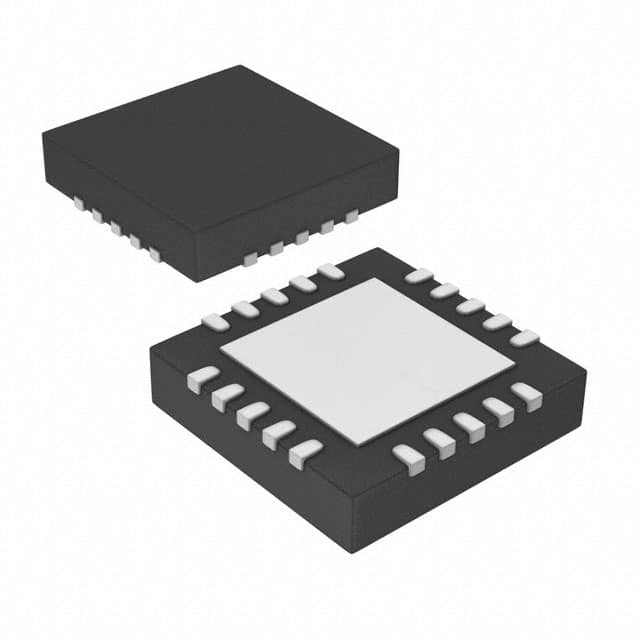Consulte las especificaciones para obtener detalles del producto.

PIC16F1708-I/ML
Product Overview
Category
The PIC16F1708-I/ML belongs to the category of microcontrollers.
Use
This microcontroller is commonly used in various electronic devices and embedded systems for controlling and processing data.
Characteristics
- Low power consumption
- High performance
- Small form factor
- Wide operating voltage range
- Integrated peripherals for enhanced functionality
Package
The PIC16F1708-I/ML is available in a small outline 28-pin package (ML) which is suitable for surface mount applications.
Essence
The essence of the PIC16F1708-I/ML lies in its ability to provide efficient control and processing capabilities in a compact and low-power package.
Packaging/Quantity
The PIC16F1708-I/ML is typically packaged in reels or tubes, with a quantity of 1000 units per reel/tube.
Specifications
- Microcontroller architecture: 8-bit
- CPU speed: Up to 32 MHz
- Program memory size: 14 KB
- RAM size: 512 bytes
- Number of I/O pins: 25
- Analog-to-digital converter (ADC): 10-bit resolution, 12 channels
- Serial communication interfaces: UART, SPI, I2C
- Timers/Counters: 3 timers, 1 watchdog timer
- Operating voltage range: 2.3V to 5.5V
- Operating temperature range: -40°C to +125°C
Detailed Pin Configuration
The PIC16F1708-I/ML has a total of 28 pins. The pin configuration is as follows:
- Pins 1-8: Digital I/O pins
- Pin 9: VDD (Power supply)
- Pin 10: VSS (Ground)
- Pins 11-18: Digital I/O pins
- Pin 19: MCLR (Master Clear)
- Pins 20-27: Digital I/O pins
- Pin 28: OSC1/CLKIN (Oscillator input)
Functional Features
The PIC16F1708-I/ML offers several functional features, including:
- Enhanced core architecture for improved performance
- Integrated peripherals such as ADC, UART, SPI, and I2C for versatile communication options
- Timers and counters for precise timing control
- Low-power modes for efficient energy consumption
- Flexible I/O configuration for interfacing with external devices
- Built-in oscillator for clock generation
Advantages and Disadvantages
Advantages
- Compact size and low power consumption make it suitable for portable and battery-powered applications.
- Wide operating voltage range allows for compatibility with various power sources.
- Integrated peripherals reduce the need for additional components, saving cost and board space.
- Enhanced core architecture provides improved processing capabilities.
Disadvantages
- Limited program memory size may restrict the complexity of applications.
- Limited RAM size may impose constraints on data storage and manipulation.
- Lack of advanced features found in higher-end microcontrollers.
Working Principles
The PIC16F1708-I/ML operates based on the principles of a typical microcontroller. It executes instructions stored in its program memory to perform specific tasks. The integrated peripherals and I/O pins allow it to interact with external devices and process data accordingly. The microcontroller's working principles involve fetching, decoding, and executing instructions in a sequential manner.
Detailed Application Field Plans
The PIC16F1708-I/ML finds applications in various fields, including but not limited to:
- Home automation systems
- Industrial control systems
- Automotive electronics
- Medical devices
- Consumer electronics
- Internet of Things (IoT) devices
Detailed and Complete Alternative Models
Some alternative models to the PIC16F1708-I/ML microcontroller include:
- PIC16F1709-I/ML
- PIC16F1713-I/ML
- PIC16F1716-I/ML
- PIC16F1717-I/ML
- PIC16F1718-I/ML
These alternative models offer similar functionalities and characteristics, providing options for different project requirements.
Word count: 525 words
Enumere 10 preguntas y respuestas comunes relacionadas con la aplicación de PIC16F1708-I/ML en soluciones técnicas
Question: What is the maximum operating frequency of PIC16F1708-I/ML?
Answer: The maximum operating frequency of PIC16F1708-I/ML is 32 MHz.Question: Can PIC16F1708-I/ML be used for motor control applications?
Answer: Yes, PIC16F1708-I/ML can be used for motor control applications with its integrated peripherals and PWM capabilities.Question: What are the available communication interfaces on PIC16F1708-I/ML?
Answer: PIC16F1708-I/ML features SPI, I2C, and UART communication interfaces for versatile connectivity.Question: Is PIC16F1708-I/ML suitable for battery-powered applications?
Answer: Yes, PIC16F1708-I/ML is suitable for battery-powered applications due to its low power consumption and sleep modes.Question: Can PIC16F1708-I/ML be programmed using C language?
Answer: Yes, PIC16F1708-I/ML can be programmed using C language with the MPLAB XC8 compiler.Question: What are the available analog-to-digital converter (ADC) channels on PIC16F1708-I/ML?
Answer: PIC16F1708-I/ML has 10-bit ADC with up to 12 channels for analog signal acquisition.Question: Does PIC16F1708-I/ML support external interrupts?
Answer: Yes, PIC16F1708-I/ML supports external interrupts for efficient event-driven processing.Question: Can PIC16F1708-I/ML be used in temperature sensing applications?
Answer: Yes, PIC16F1708-I/ML can be used in temperature sensing applications with its analog input and sensor interfacing capabilities.Question: What are the available timer modules on PIC16F1708-I/ML?
Answer: PIC16F1708-I/ML features multiple timer modules including Timer0, Timer1, and Timer2 for precise timing and control.Question: Is PIC16F1708-I/ML suitable for automotive electronics applications?
Answer: Yes, PIC16F1708-I/ML is suitable for automotive electronics applications with its robust design and wide operating voltage range.

